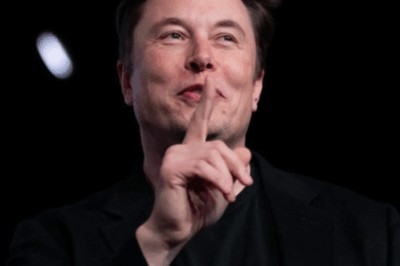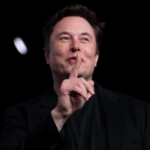Elon Musk’s ‘favorite’ product is likened to a ‘moving trash can’, a disaster in the auto industry.

The list of famous auto “disasters” is long and storied. First, there are the Ford Edsel (a car that was overhyped and criticized for looking like a toilet), the Pinto, and the ugly hybrid SUV Pontiac Aztek from General Motors. Even John Delorean’s shiny stainless steel DMC-12, made famous by the “Back To The Future” series, was a sales flop that bankrupted the company.
Now, Elon Musk’s “baby” Tesla Cybertruck, which looks like a moving trash can, has climbed to the top of that list.
After more than a year on the market, sales of the 3-ton Tesla Cybertruck, which starts at $82,000, are laughably low compared to what Elon Musk predicted. With its poor quality—it’s been recalled eight times in the past 13 months, most recently for falling body panels—and its controversial design, the Cybertruck has become a comedy staple.
Unlike past “automotive disasters” that were simply ugly or unsold, Musk’s pickup has become the focus of global protests against Tesla—driven by his role in mass firings linked to DOGE, as well as his pro-MAGA (Make America Great Again) politics.
NO MARKET RESEARCH
“It’s right up there with the Edsel,” said Eric Noble, president of consultancy CARLAB and professor at the ArtCenter College of Design in Pasadena, California (where Tesla chief designer Franz von Holzhausen, who designed the Cybertruck, attended). “It was a big swing… and a big miss.”
Earlier, in November 2019, when announcing the new Cybertruck, Elon Musk boldly declared: “I did absolutely no market research.”
In terms of sales alone, Musk’s Cybertruck is even worse than the Edsel – a name that has become synonymous with a disastrous product failure. In 1958, Ford expected to sell 200,000 Edsels a year, but only achieved 63,000. Sales plummeted in 1959 and the brand was discontinued in 1960.
For his part, Musk once predicted that the Cybertruck could reach 250,000 sales per year. But in reality, Tesla sold less than 40,000 vehicles in 2024, the first full year of the product. There is no sign of sales picking up, with January and February sales falling, according to data from Cox Automotive.
Tesla’s global sales have also been on a tear this year — first-quarter deliveries fell 13% to 337,000, well below consensus expectations of 408,000. Tesla doesn’t break out Cybertruck sales, instead grouping them with the Model S and Model X — its top-of-the-line models. But Baird analyst Ben Kallo said Cybertruck sales were clearly hurt this quarter by recalls and repairs. Tesla did not immediately respond to a request for comment.
The quarter-on-quarter slowdown highlights the fact that the Cybertruck’s actual results don’t match Musk’s bombastic claims.
“Demand is incredible,” Musk bragged during an earnings call in November 2023, just before the first Cybertrucks were delivered to customers. “We’ve had over a million people pre-order this vehicle.”
With expectations of big sales, Tesla has even modified its Gigafactory in Austin to produce up to 250,000 Cybertrucks a year—an investment in production capacity that is unlikely to pay off.

“They didn’t just say they wanted to sell a lot — they were prepared to sell a lot,” said auto analyst Glenn Mercer, head of consulting firm GM Automotive in Cleveland. But the assumption of huge demand turned out to be wrong. They also failed to anticipate the roadblocks they created, further reducing sales.
One of the big hurdles: The Cybertruck was too bulky, or didn’t comply with pedestrian safety standards in many countries, making international expansion almost impossible.
“They didn’t sell a lot, and it doesn’t look like overseas markets can save the day — not even China, which used to be a very strong market for Tesla,” Mercer said. “This is really a U.S.-only vehicle.”
More than a decade before the Cybertruck went into production, Elon Musk hinted that Tesla would eventually make an electric pickup. But when he first introduced the design to the world, Musk made it clear that he didn’t want anything “traditional” — not even a hybrid like Rivian did with the R1T. “Trucks have looked the same for 100 years,” Musk declared, “and the Cybertruck looks like nothing else.”
“The spectacular failure of the Cybertruck was a failure of empathy,” said Eric Noble of CARLAB, a consumer research-based product development consultancy. “From the design of the bed, the cabin, the performance, to the practical use — none of it had anything to do with the needs of the truck buyer.”
According to a person familiar with the vehicle’s development who asked not to be named for privacy reasons, the Cybertruck’s unmistakable look comes from two main factors:
– Musk’s passion for sci-fi-inspired designs.
– The early decision that the vehicle wouldn’t need paint.
MISTAKEN
Not having to paint would have saved Tesla up to $200 million in investment in a new paint shop, and would have avoided the EPA’s strict oversight of emissions and industrial waste.
Musk ultimately chose a stainless steel body, like the one used on the ill-fated Delorean four decades earlier. But since Musk is not a manufacturing engineer, he may have underestimated the challenges the material posed compared to aluminum or composites. Stainless steel shows fingerprints easily—like household items—and is difficult to bend, and can “snap back” to its original shape, causing problems with the Cybertruck’s body panels.
“That’s where they misjudged the trade-off,” Mercer said.
He estimates the total cost of developing the Cybertruck, including the cost of installing equipment at the Austin factory, at about $900 million. And unlike the Model 3 or Model Y, the Cybertruck shares no manufacturing platform or technology with Tesla’s other vehicles. “The factory is designed specifically for Cybertruck production. An unpainted, stainless steel vehicle is not replicable in the current manufacturing ecosystem.”
Tellingly, the ominous omens were evident from the start. At the Cybertruck’s November 2019 unveiling in Los Angeles, a “bulletproof glass” demonstration turned into a joke when Musk and von Holzhausen threw steel balls at the vehicle—and shattered the windows twice.
“Oh my God,” Musk muttered in embarrassment at the time.
Then there’s the price. Musk had promised that the base model with a 250-mile range would start at $39,900. It’s nearly double that.
Currently, the “base” version starts at $72,490, but it actually costs $82,235 before the $7,500 federal tax credit — which President Trump has vowed to repeal. The top-of-the-line “Cyberbeast” starts at $105,735, which is above the threshold for qualifying for the incentive.
Tesla is not making a low-cost version, as Musk promised in 2019. But resale values are plummeting, according to Jalopnik. A lightly used one can be had for less than $70,000 — if you don’t mind the risk of vandalism. And prices could drop further, as Tesla is sitting on about $200 million in inventory, according to Electrek.
Ultimately, the Cybertruck became a self-inflicted curse that Musk created by ignoring the real reason people buy pickup trucks — to haul heavy loads and do well off-road. The vehicle did not do any of these things well, according to a series of critical reviews, “Cybertruck fail” videos, and the “CyberStuck” forum with more than 280,000 members.
To make matters worse, videos have emerged of Cybertrucks being towed away by Ford F-150s or GM Silverados. “If there’s one thing the Detroit Big Three are good at, it’s making full-size pickup trucks with an incredibly loyal following,” Mercer said.
“Musk has launched the Cybertruck into the toughest segment to break into.”
News
Tiger Woods’ son, Charlie Woods, achieves major golf achievement, marking an important milestone in his journey to follow in his father’s footsteps
Tiger Woods’ Son Charlie Woods Earns Major Golf Honor A well-deserved honor for Tiger Woods’ son. ORLANDO, FLORIDA – DECEMBER…
Elon Musk’s fate-deciding meeting of the decade: Either have a chance to become the first trillionaire or leave Tesla forever
Elon Musk’s fate at the Tesla empire will soon be decided. Tesla shareholders could soon give CEO Elon Musk, the…
Niall Horan ‘struggled’ with this aspect of One Direction fame
Though the five One Direction lads looked happy on the outside, they struggled to cope with their drastic rise to fame, which…
Malone continued to gush about his daughter, calling her “f—ing hilarious.
Post Malone Is A Proud Dad, Reflects On Lessons Learned from Raising His 3-Year-Old Daughter And Her Love For George…
Kane Brown shares the results he got after deciding to give up some bad habits!
Kane Brown Quits Tobacco and Alcohol, Drops Over 24 Pounds in Remarkable Health Transformation “Once I realized how tough it…
Lainey Wilson feels like she has “Impostor Syndrome” where the devil always has a way of showing up, wielding his little stick, and stirring things up”
Country Star Lainey Wilson Makes Bold Admission About Her Career: ‘The Devil Has a Way of Coming In’ Lainey Wilson should…
End of content
No more pages to load












